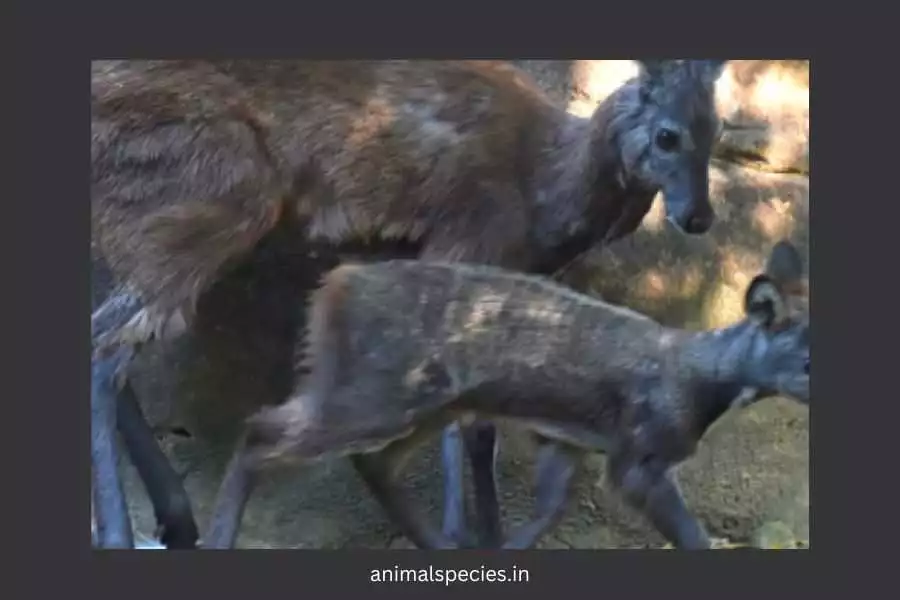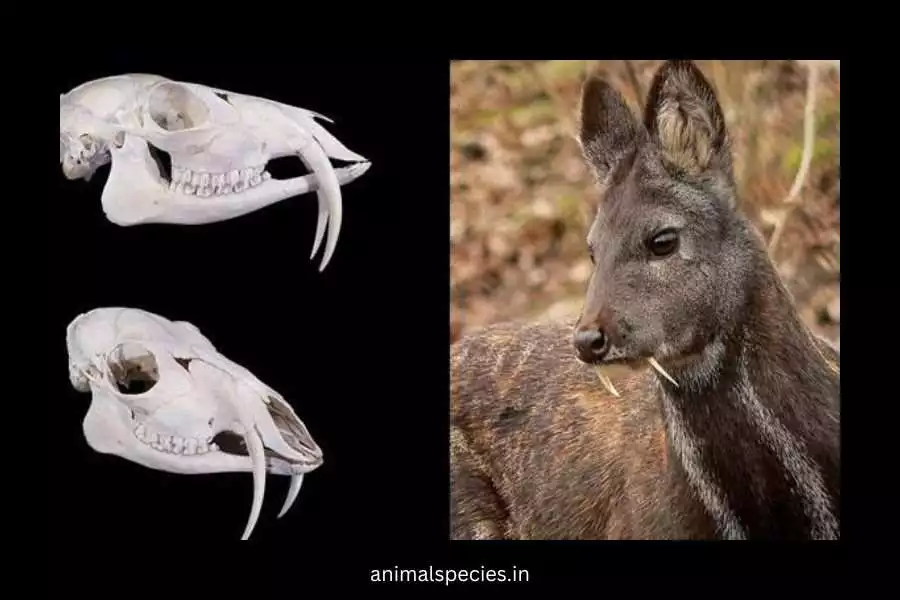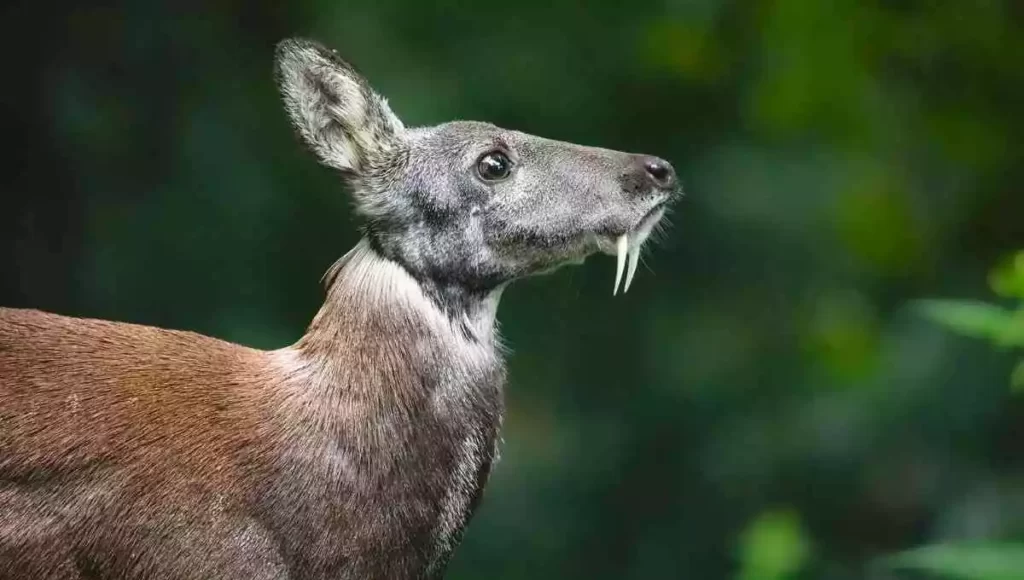The Siberian Musk deer is a species of musk deer belonging to the Moschidae family. Siberian Musk Deer also known as ‘The Vampire Deer’. The scientific name of this species is Moschus Moschiferus. It is mostly found in mountain forests of Northeast Asia, Mongolia, and Southern Siberia.
The Siberian Musk Deer is a small species of musk deer species. Due to their small size, they can easily hide or run fast from their predators. Unfortunately, these species of deer are actually decreasing day by day due to poaching, habitat loss, etc.
But it is expected that the Siberian Musk Deer species population will be reduced to at least 30% next three generations.
Siberian Musk Deer Habitat and Location:
Siberian Musk deer are nocturnal, they are found in mountain areas and shrub-covered slopes just like their cousins. Siberia, North Mongolia, Russia, North China, and Korea are the main location for these species.

Siberian Musk Deer Evolution:
According to the study, the musk deer belong to the Middle and Upper Pleistocene. This species comes from China and the south of the soviet east and evolved in the mountain forests of Eastern Asia.
The Researchers also said that these species live on Sakhalin Island before continent separation.
Related: Why Cheetah is So Special?
5 Unknown Facts about Siberian Musk Deer:
Here are the 5 interesting facts about Siberian Musk Deer:
1. The Siberian musk deer is a small deer species mostly found in the forests and mountain areas of Siberia and other parts of Asia.
2. The deer gets its name from the musk glands on the male’s abdomen, which they use to attract females.
3. These species of deer are herbivorous, eating mainly on leaves, grasses, and twigs.
4. The Siberian musk deer is a nocturnal animal.
5. The Siberian Musk deer is listed as a vulnerable species by the International Union for Conservation of Nature (IUCN) due to habitat loss, and illegal hunting for their musk glands.
6. The Siberian Musk deers musk glands price is$45,000 per kilogram in Us Dollars.
Related: Fun Lion Facts
Siberian Musk Deer Mating and Breeding:

In one year the Siberian Musk deer become mature. During breeding time, male deer will grow tusks like vampires instead of antlers. The tusks will help them to fight with other deer or attract female deer.
The tusks are very strong and long, that’s why most female deer become attractive to males. The female becomes pregnant for over 6 months after their mating. Females give birth between November and December.
Females give birth in special areas under dense shrubs, low branches of fur, or around fallen trees. The babies live with their mothers until they’re two although they reach sexual maturity around 15 to 18 months old. Siberian Musk deer live about 12 to 20 years.
Related: 12 fun facts about Cheetah
Behaviors:

Musk deer are so intelligent. Musk deer mark their territory with tree trunks, branches, plant stems, and leaves and place them in a circle.
They even warn their other deer to not cross the mark. One fun fact about their behavior is that they turned back of its body towards the other deer.
Diet:
The Siberian Musk deer are herbivores. They are ruminants meaning they consume relatively calorie-poor food that gets fermented in their digestive tract to extract all the available nutrients.
In the frozen Hills of Siberia, there isn’t much to eat in the winter. That time they eat pine needles leaves, bark, maple, and honeysuckle shoots but mostly lichen.
In cold winters the Siberian Musk deer is able to survive on lichens that grow on evergreen trees they make up to 99 of their winter diet.
One good thing about the lichen is lichen extracts nutrients from tree bark and even rocks and this species needs all the nutrients it can get to survive the hardest winter months.
Related: Types of Bear
Size and Characteristics:

Siberian Musk deer can reach about 10 centimeters long and they never stop growing their whole lives. Older Siberian males have the most giant tusks.
They have pre-orbital glands near their eyes which they use to mark their scent and communicate with other animals.
In IUCN red list, the Siberian Musk deer are classified as Vulnerable but due to illegal poaching and habitat loss, they will become endangered soon.
It is hunted for its musk gland (price $45,000 per kilogram). The most unique characteristics of the Siberian musk deer are its tusks and Kangaroo face.
Related: Top 8 interesting facts about Meerkat
Threats:
In the 1950s the Siberian musk accounted for 80% of the domestic trade. After the 1980s, the populations of this species become describe due to illegal hunting for their musk glands.
Illegal poaching is the main threat to this animal. Another dangerous threat for Siberian musk deer is habitat loss. In the last 25 years, china cut more than 200 cm of forests.
Deforestation is another main threat to this animal because the Siberian deer only live in a few places.
Related: Fun Monkey Facts
Conservation Action:
In IUCN, The Siberian Deer are listed as Vulnerable, but slowly they become “Endangered” due to two main reasons.
In Russia, It is protected as part 7.1 of the law of the Mongolian Animal Kingdom (2000) and also under the 1995 Mongolian Hunting Law. The 13% Siberian Musk deer are also protected under the National Parks.
FAQs:
Why do Siberian musk deer have fangs?
Siberian musk deer have long, sharp tusks or fangs which protrude from their upper jaw, and these are primarily used by males during the mating season to compete for females. Male musk deer use their tusks to engage in violent clashes with other males.
What is special about musk deer?
The special thing about musk deer is during breeding time, male deer will grow tusks like vampires instead of antlers. The tusks will help them to fight with other deer or attract female deer.
What does the Siberian musk deer eat?
The Siberian Musk deer are herbivores. They are ruminants meaning they consume relatively calorie-poor food that gets fermented in their digestive tract to extract all the available nutrients.
In the frozen Hills of Siberia, there isn’t much to eat in the winter. That time they eat pine needles leaves, bark, maple, and honeysuckle shoots but mostly lichen.
What is musk deer hunted for?
It is hunted for its musk gland (price $45,000 per kilogram).
Is musk deer found in India?
Yes, Himalayan musk deer is a species of musk deer found in the Himalayas and other countries including Nepal, Bhutan, India, Pakistan, and China.
Conclusion:
In conclusion, the Siberian musk deer is a beautiful species that is known for its unique physical characteristics and the musk. While the population of this species has declined due to overhunting for musk and habitat destruction, conservation efforts are underway to protect these deer and their habitats. Understanding and protecting the Siberian musk deer is important for preserving this unique species and maintaining the biodiversity of the ecosystems in which they live. With continued efforts to protect these animals and their habitats, we can ensure that the Siberian musk deer remains a vital part of our natural world for generations to come.
Source: Wikipedia

